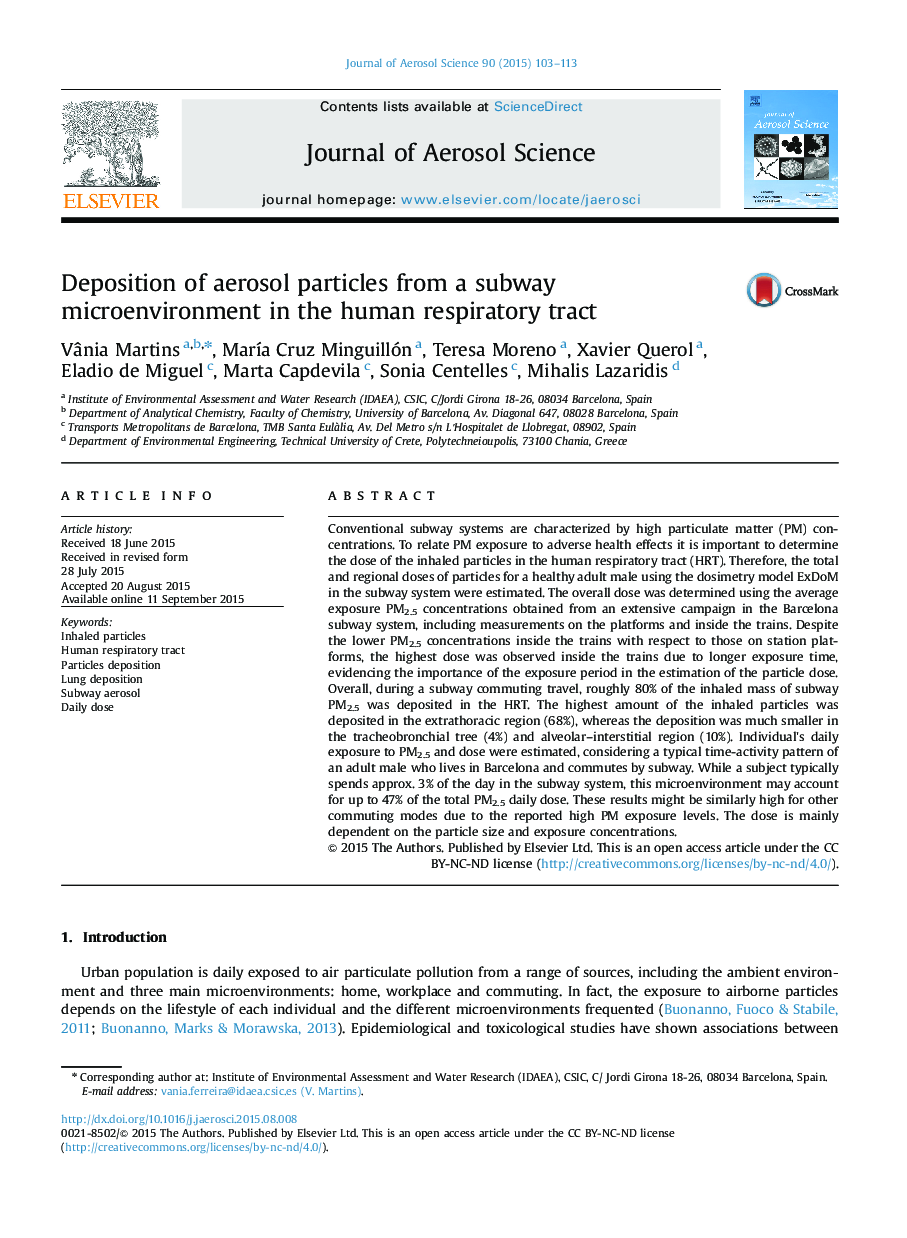| Article ID | Journal | Published Year | Pages | File Type |
|---|---|---|---|---|
| 6344387 | Journal of Aerosol Science | 2015 | 11 Pages |
â¢Particle deposition is proportional to the exposure concentrations.â¢Deposition fraction of subway PM2.5 in the human respiratory tract is ca. 80%.â¢The highest amount of the subway PM2.5 is deposited in the extrathoracic region.â¢Subway commuting is characterized by an elevated PM2.5 dose over a short time period.â¢The total deposition rate increase with increasing particle size.
Conventional subway systems are characterized by high particulate matter (PM) concentrations. To relate PM exposure to adverse health effects it is important to determine the dose of the inhaled particles in the human respiratory tract (HRT). Therefore, the total and regional doses of particles for a healthy adult male using the dosimetry model ExDoM in the subway system were estimated. The overall dose was determined using the average exposure PM2.5 concentrations obtained from an extensive campaign in the Barcelona subway system, including measurements on the platforms and inside the trains. Despite the lower PM2.5 concentrations inside the trains with respect to those on station platforms, the highest dose was observed inside the trains due to longer exposure time, evidencing the importance of the exposure period in the estimation of the particle dose. Overall, during a subway commuting travel, roughly 80% of the inhaled mass of subway PM2.5 was deposited in the HRT. The highest amount of the inhaled particles was deposited in the extrathoracic region (68%), whereas the deposition was much smaller in the tracheobronchial tree (4%) and alveolar-interstitial region (10%). Individual's daily exposure to PM2.5 and dose were estimated, considering a typical time-activity pattern of an adult male who lives in Barcelona and commutes by subway. While a subject typically spends approx. 3% of the day in the subway system, this microenvironment may account for up to 47% of the total PM2.5 daily dose. These results might be similarly high for other commuting modes due to the reported high PM exposure levels. The dose is mainly dependent on the particle size and exposure concentrations.
